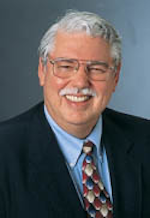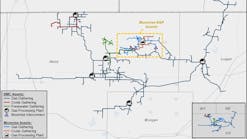Oil companies have been prosecuted for federal crimes when migratory birds died in waste pits at drilling sites, but apparently US President Barack Obama's administration figures eagles whacked out of the air by wind farm turbines simply committed suicide.
The issue hit the fan when the Associated Press recently reported the administration has never prosecuted or fined a wind-energy company for the death of protected birds despite turbines in the US killing more than 573,000 birds/year, including hawks, falcons, and eagles. Even thousands of bats are swatted from the sky by turbine blade tips traveling 120-180 mph.
Siting of wind farms is part of the problem. Critics claim the Altamont Pass Wind Farm, which lies in the middle of important migratory routes and prime raptor habitat in northern California, kills about 10,000 birds/year. People in Converse County, Wyo., report at least one golden eagle a month is mangled by wind turbines there. Critics charge Obama officials not only failed to prosecute wind farms for such deaths but even tried to suppress the number of casualties.
In January, Sens. David Vitter (R-La.) and Lamar Alexander (R-Tenn.) wrote US Atty. Gen. Eric Holder asking why he is "targeting" oil and gas companies for prosecution for accidental deaths of fowl protected by the Migratory Bird Treaty Act of 1918 (MBTA). Vitter claimed MBTA was intended to criminalize only the intentional killing of birds.
Legal precedent
There is judicial support of Vitter's claim. In September 2011, the US attorney for North Dakota charged seven oil and gas companies with killing 28 migratory birds protected by MBTA, primarily waterfowl that mistook tarry waste pits for pools of water. The maximum sentence for each incident could be 6 months in federal prison for someone and a fine of $15,000.
But when three of the companies came to trial, the federal district judge dismissed charges on grounds MBTA's language appears to cover only intentional, not accidental, killing of birds. Congress would have to reword the law to include accidental deaths, he said, but warned it then might apply also to birds killed by motor vehicles, flying into windows, or by pet cats, not to mention millions of birds killed by colliding with aircraft in flight—even if they take the aircraft down with them.
Investments decline
Meanwhile, the Pew Charitable Trusts reported global investment in clean energy declined 11% last year even as capacity increased. And although the US installed record amounts of wind and solar power generators, it fell behind China in clean-energy investment that is shifting from the West to the East. "The Asia and Oceania region has grown 9 straight years and in 2012 became the leading regional destination for clean energy investment, growing 16% to $101 billion and accounting for 42% of the global total," Pew analysts said. "In contrast, policy uncertainty in Europe and the US resulted in investment declines of 22% in the Europe, Middle East, and Africa regions, and 31% in the Americas.
The European Union seems to be making an "EU-turn" away from expensive green energy programs, said Benny Peiser, chairman of the Global Warming Policy Foundation in London. While the shale gas boom is reducing energy prices in the US, European manufacturers are bucking the world's highest energy costs, up 27% between 2005 and early 2012, while struggling against Europe's longest recession since World War II. Moreover, the shale gas boom in the US has squeezed the domestic coal market resulting in increased exports of cheap coal that are displacing natural gas as fuel for electric plants in Europe. This is forcing politicians to rethink expensive programs to reduce carbon emissions. Several EU members including Spain, Italy, and Germany have curtailed incentives for wind and solar development.

Sam Fletcher | Senior Writer
I'm third-generation blue-collar oil field worker, born in the great East Texas Field and completed high school in the Permian Basin of West Texas where I spent a couple of summers hustling jugs and loading shot holes on seismic crews. My family was oil field trash back when it was an insult instead of a brag on a bumper sticker. I enlisted in the US Army in 1961-1964 looking for a way out of a life of stoop-labor in the oil patch. I didn't succeed then, but a few years later when they passed a new GI Bill for Vietnam veterans, they backdated it to cover my period of enlistment and finally gave me the means to attend college. I'd wanted a career in journalism since my junior year in high school when I was editor of the school newspaper. I financed my college education with the GI bill, parttime work, and a few scholarships and earned a bachelor's degree and later a master's degree in mass communication at Texas Tech University. I worked some years on Texas daily newspapers and even taught journalism a couple of semesters at a junior college in San Antonio before joining the metropolitan Houston Post in 1973. In 1977 I became the energy reporter for the paper, primarily because I was the only writer who'd ever broke a sweat in sight of an oil rig. I covered the oil patch through its biggest boom in the 1970s, its worst depression in the 1980s, and its subsequent rise from the ashes as the industry reinvented itself yet again. When the Post folded in 1995, I made the switch to oil industry publications. At the start of the new century, I joined the Oil & Gas Journal, long the "Bible" of the oil industry. I've been writing about the oil and gas industry's successes and setbacks for a long time, and I've loved every minute of it.

